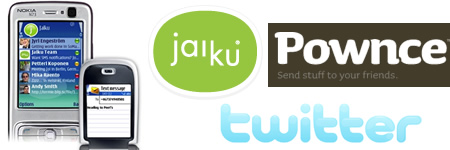

The iPhone. No one can say that name today without some kind of reaction. Many predicted that it would bring a revolution in the way that we access the web. Most people weren’t aware that we needed a revolution. That is, unless you were one of the few that had attempted to access the web on a mobile device.
Accessing the Internet is very popular in other countries, but in the United States it has yet to really catch on. The premise sounds great: the entire world wide web of information, on your phone, anywhere you can get a signal. But the limitations seemed to kill that concept in the United States.
The small screen size on most phones and PDA’s didn’t help. But for most, that was not the deciding factor. The main problem was that almost all devices didn’t actually access the real internet. They had to access a mobile version of the sites they wanted to visit – and most sites just don’t have that. On top of that, features like Flash, AJAX, and PDF don’t always work on mobile devices. The iPhone is changing this, and hopefully others will catch on.
Many teachers have seen cell phones as a huge problem in education. The problem has not actually been the cell phones themselves, but the usage of the phones. From taking secret videos of enraged teachers, to ignoring lectures while texting away with friends – cell phones certainly have not had a good start in education. But that can change, if instructors are willing to make cellphones a part of education.
Think about this a second – students are carrying around a device in their pockets that has a camera, a communication device, and a web browser in it. It’s almost a full computer – and someday soon, they will be full computers. So – here are a few ideas for how to use cell phones in education:
- Observe or find art around you. Take a picture of yourself with the art, and post it to a blog.
- Virtual treasure hunt. Students follow clues online to lead them around campus, or even town, to find something related to your course content.
- Tear down the walls in class. Decide to have a class meeting somewhere else on campus each week. Text students to tell them where to meet.
- Interview community leaders or experts related to your content. Using a site like Gcast, students can conduct the interview using a cellphone and post it as a podcast.
Any combination of photos, the web, messaging, and getting out in the open could be combined to create an endless wealth of lesson ideas.

